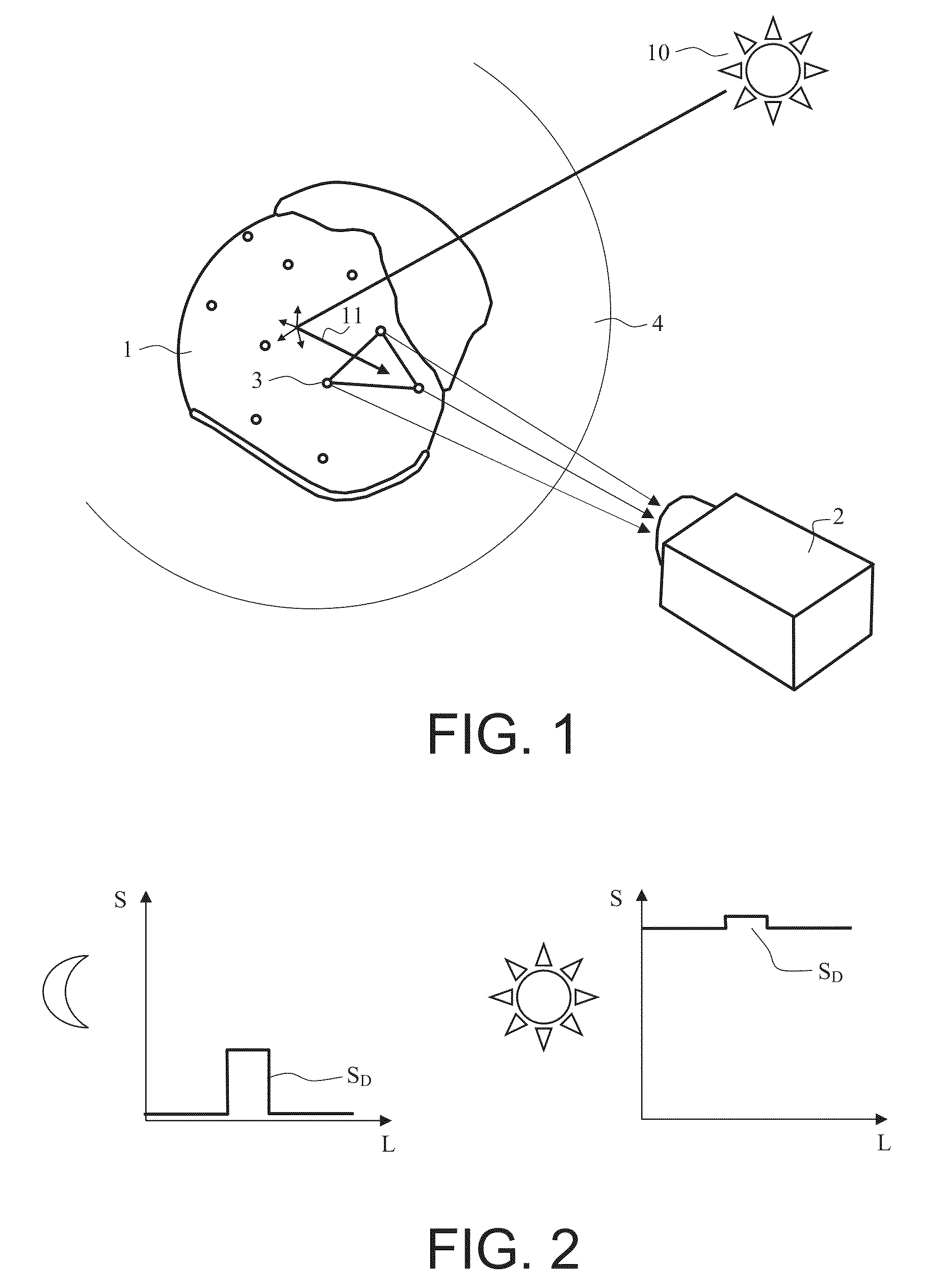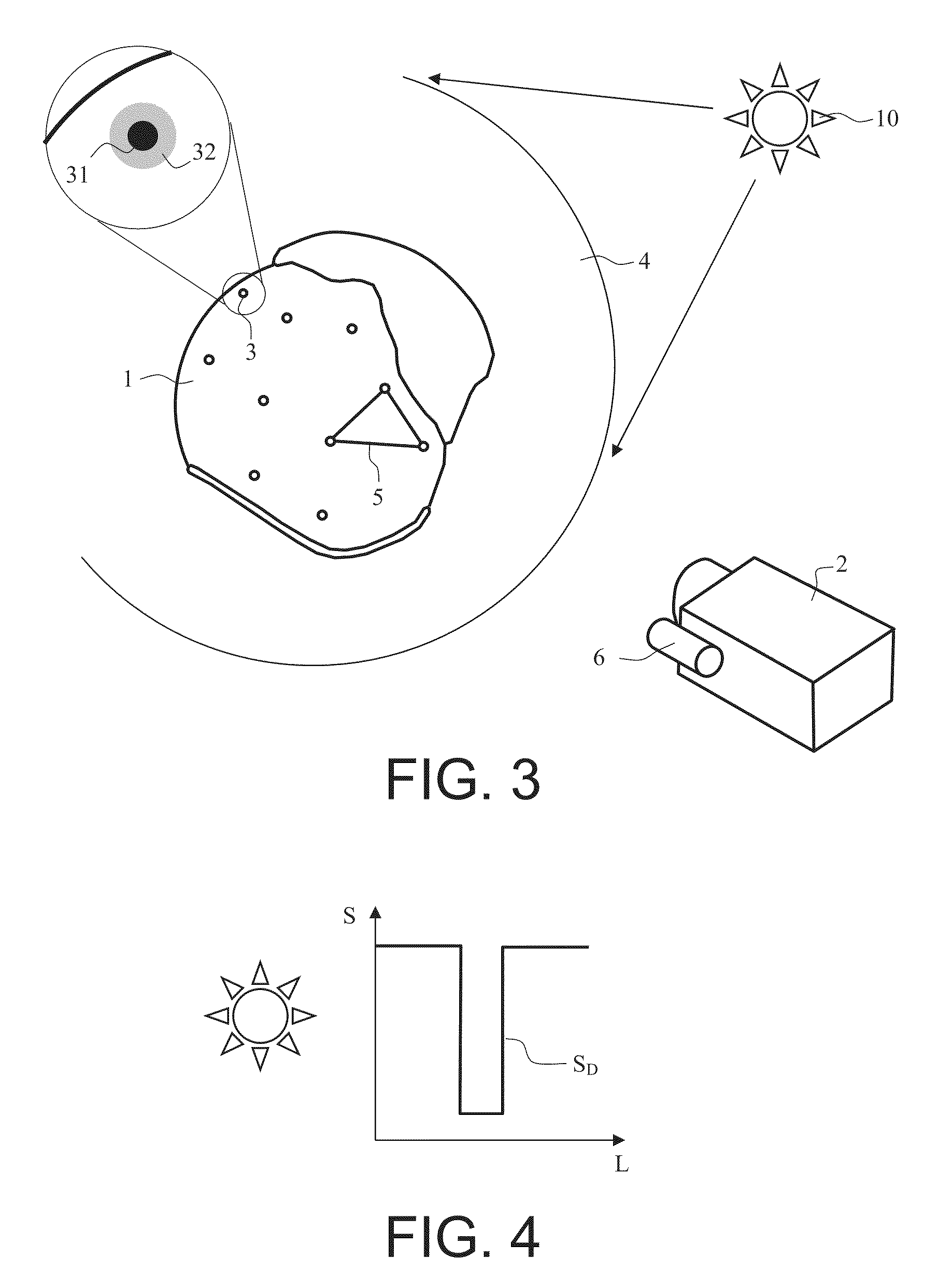Optical Helmet-Position Detection Device Having a Large Dynamic Range
a detection device and optical technology, applied in the direction of instruments, reflex reflectors, reradiation, etc., can solve the problem of increasing the cost of the detection system
- Summary
- Abstract
- Description
- Claims
- Application Information
AI Technical Summary
Benefits of technology
Problems solved by technology
Method used
Image
Examples
first embodiment
[0035]This second device essential differs from the first embodiment by the operation of the markers. In the present case, each marker 3 comprises a first optical element 31 of the “catadioptric” type, having a very high retroreflection coefficient and a very low scattering coefficient in the visible range. Thus, the solar radiation is necessarily reflected in the sun's direction, as may be seen in FIG. 8, and cannot reach the cameras. In the daytime, the operation is therefore identical to that of the previous device.
[0036]The term “catadioptric” refers to any optical reflector or retroreflector having the property reflecting a light beam in the same direction as its incident direction. To give an example, a “cube corner” reflector formed from three mutually orthogonal plane mirrors is a catadioptric reflector. Thus, a light beam emitted by the emitting part and illuminating the catadioptric reflector is re-emitted in the same direction towards the receiving part with an excellent ...
second embodiment
[0044]In the second embodiment shown in FIG. 8, the device includes optomechanical means of producing an image of the light source on the optical axis of the camera. In the case of FIG. 8, these means are simply a mirror 61 and a semireflecting plate 62 for mixing the two, source and camera, channels. In this case, the radiation from the source illuminating the catadioptric reflector is sent back to the camera. The catadioptric reflector appears bright on a dark background, as shown in FIG. 9. It no longer necessary for the marker 3 to include a second optical element 32. Advantageously, the helmet coating is of dark colour on the periphery of the catadioptric reflector.
[0045]To improve the detection, it is possible to make a number of modifications to the general arrangements described above. Thus, the light source, when it is present, will be turned off when the sunshine conditions are sufficient; it may be modulated temporally; it may be a scanning light source; it may be control...
PUM
 Login to View More
Login to View More Abstract
Description
Claims
Application Information
 Login to View More
Login to View More - R&D
- Intellectual Property
- Life Sciences
- Materials
- Tech Scout
- Unparalleled Data Quality
- Higher Quality Content
- 60% Fewer Hallucinations
Browse by: Latest US Patents, China's latest patents, Technical Efficacy Thesaurus, Application Domain, Technology Topic, Popular Technical Reports.
© 2025 PatSnap. All rights reserved.Legal|Privacy policy|Modern Slavery Act Transparency Statement|Sitemap|About US| Contact US: help@patsnap.com



